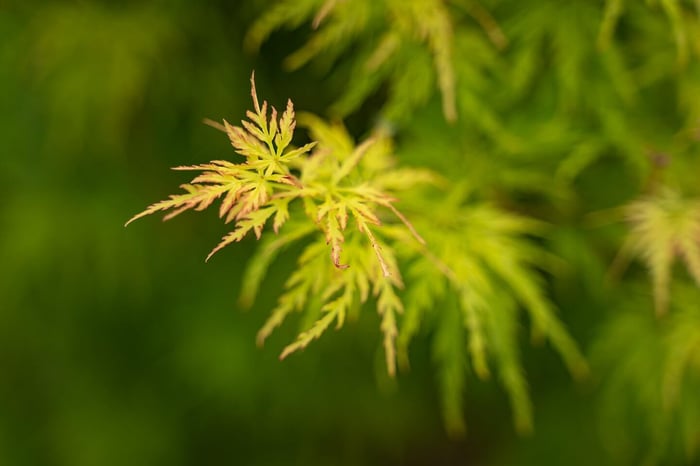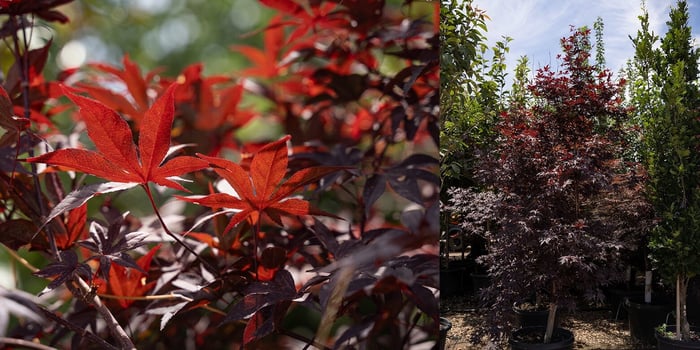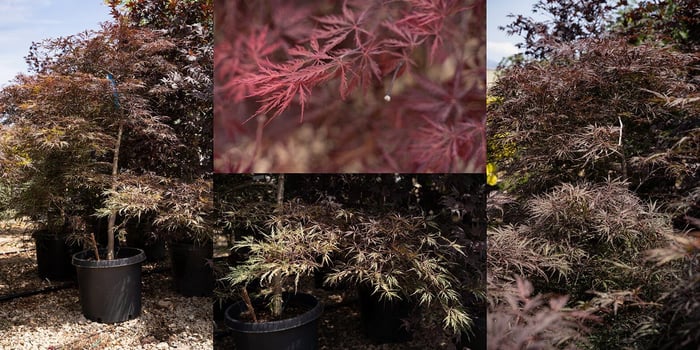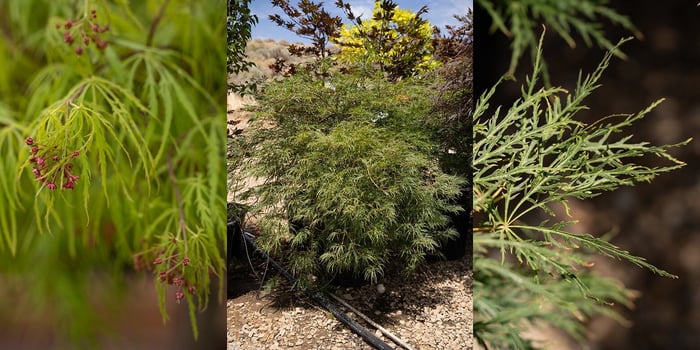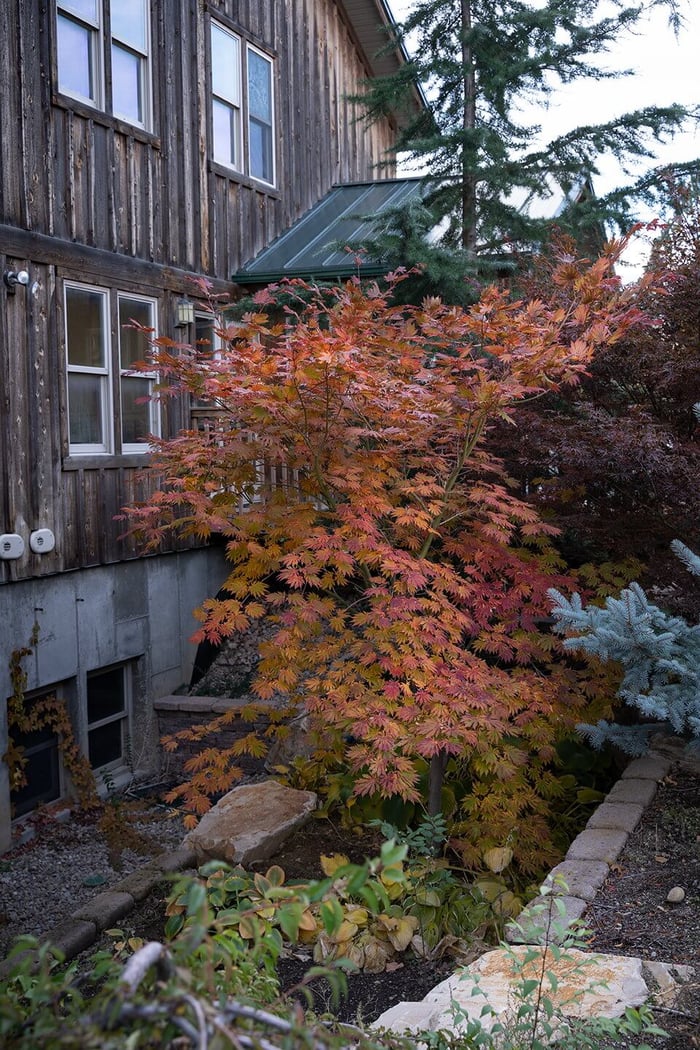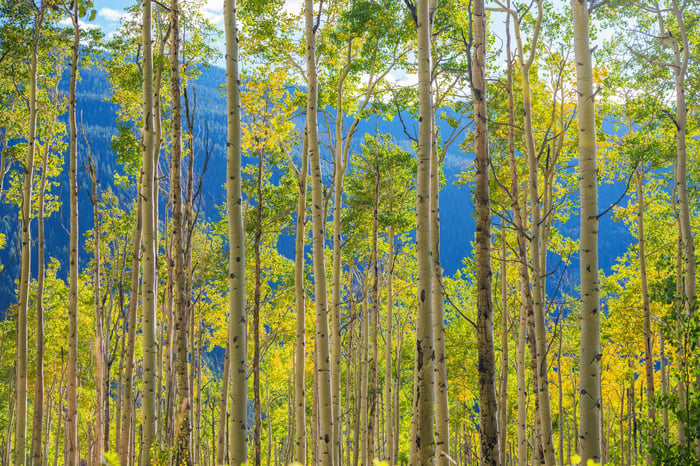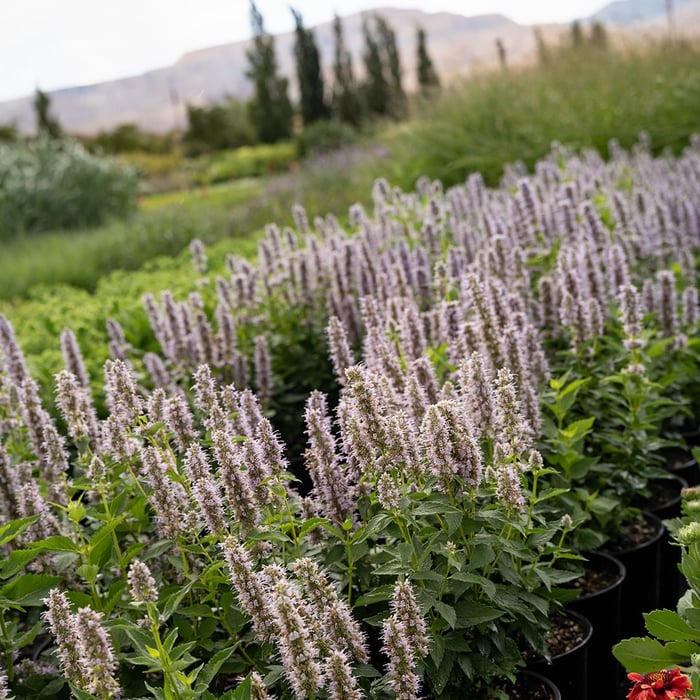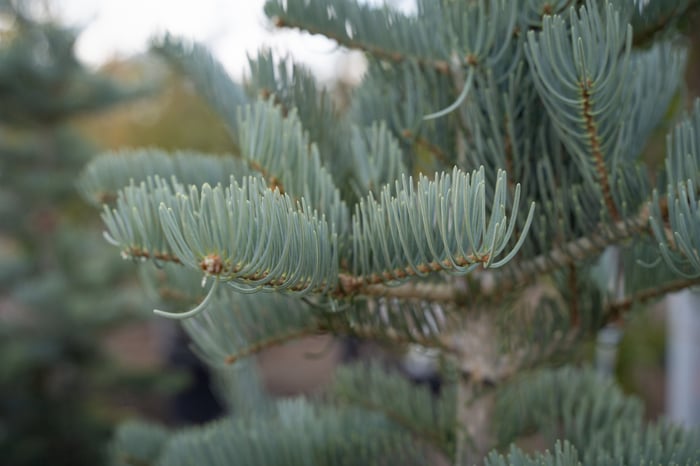Almost everyone we meet tells us how much they love Japanese Maples. They love their leaves, color, smooth bark, unusual growth habit, and diminutive size. Yet they’re almost afraid to plant them in their yard, concerned that they’ll die.
They’re a ‘heartbreaker’ tree. We've heard so many stories of people falling in love with a Japanese Maple and planting it in their yard, only to watch it suffer a slow, miserable death. Why is that? Is Utah’s climate too harsh for Japanese Maples?
It’s a common misconception because it’s partially true and also completely false. The problem is not our climate, it's your microclimate.
It’s all about location.
Like most other things you plant in your yard, the secret to having happy, thriving Japanese Maples has everything to do with where you plant them. Japanese Maples will thrive in the right conditions, and most yards in Utah have microclimates that fit those conditions beautifully. We just need to find or create the ideal microclimate where your stunning trees can thrive.
Protect them from strong, steady, summer winds.
Here in Utah, we have many summer days that are dry and windy. Often the strong wind we experience here doesn't bring any moisture—it just blows, drying out leaves and soil. No plant likes hot, dry, windy conditions, but Japanese Maples are especially prone to struggle with whipping wind. Their leaves are thin and easily damaged.
Leaves are the energy processing centers for the whole tree. Photosynthesis takes place in the leaves, so if you can protect Japanese Maples from wind damage, they will be healthier and much more beautiful.
Here in Utah, most of the harshest summer winds come from the southwest. If you plant your Japanese Maples on the north or northeast side of your house, or some other structure, you can protect them from those damaging, dry winds. It’s true that during winter we can sometimes get harsh winds from the northwest, but your maples are dormant during that time, so their leaves won’t be damaged.
Protect them from direct winter sunlight.
This may be the most critical secret of all. All maple trees have thin bark when they’re young, but Japanese Maples remain small, behaving like young maples throughout their life. This thin bark can lead to serious winter damage, especially if they’re planted in a location that receives direct sunlight during the winter, such as the south side of your home or shed.
Direct sunlight during winter is a serious issue. Because maple bark is so thin, it warms quickly in the sun. This warmth awakens the cambium layer just under the bark, encouraging it to draw up moisture from the roots. Sadly, that moisture is absorbed by the cells in the cambium layer just in time for the sun to set, leading to freezing temperatures. As that water freezes it expands, bursting the cells in your maple’s cambium layer. Before long, the damage is irreversible, and your tree will die.
However, if that same Japanese Maple were to grow on the north side of your home, it would not be heated by direct sunlight in the winter. Even though the temperature on the north side of a structure can be much colder during winter, your Japanese Maples will still thrive. Once your maples are dormant, a few degrees of colder temperatures aren’t a big issue. It’s when the temperatures rise just enough to tease them out of dormancy that the damage occurs. This beautiful Full Moon Japanese Maple has been growing on the north side of our office building for more than 10 years, and it is absolutely stunning.
At first, it may sound counterintuitive to keep your maples in the coldest area of your yard, protected from direct sunlight during the coldest time of the year, but that is exactly what they need.
That’s really it! Plant your small Japanese Maples where they can be protected from hot summer winds and direct winter sunlight, and they will thrive in your landscape! Great locations include the north side of your house, the north side of a fence, or an area protected by another structure. You could also place them in a corner of your property where the fence can protect them from the south sun and west wind. You may also choose to plant a protective barrier of evergreen conifers that will block wind and sunlight from directly reaching your maples. Once you know what to look for, you’ll find ideal microclimates everywhere.
Now that you know the secrets, we hope you’ll find all sorts of creative ways to include these amazing specimen trees in your landscape. After all, their beauty is more than worth the effort.
Good luck and happy gardening!

